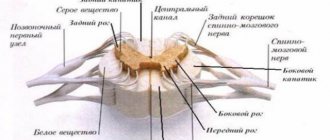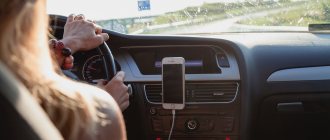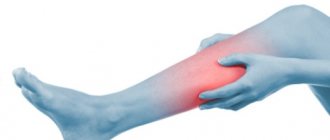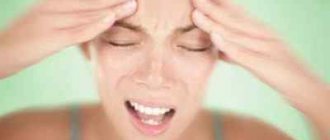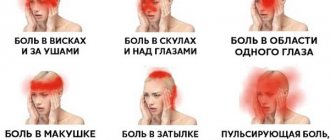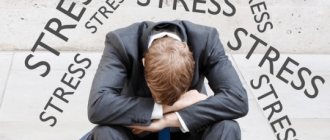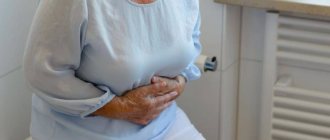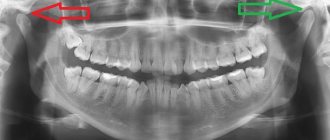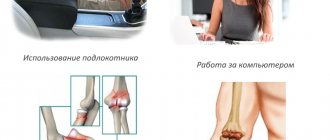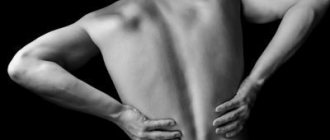What to do if the facial muscles are tense, and such tension remains on the face constantly? A similar physiognomic feature is inherent to every person to one degree or another. For this reason, any human face can be “read”. Whether a person is cheerful or sad, kind or angry, careless or anxious, friendly or arrogant, smart or stupid, healthy or sick - all this is “written” on his face thanks to tense facial muscles, or in other words, wrinkles located on the face (there are also are usually called clamp zones). By the way, this is the basis for a special ability to “read” faces, called physiognomy.
But, at the same time, the constant presence of wrinkles on the face and, as a result, the same constant expression of certain emotions is bad. Clamping zones make the face look older and uglier, and an emotion frozen on the face is even worse. For example, a person wants to show his kindness, but at this time fear or “the stamp of heavy thoughts” is imprinted on his face. The result is a discrepancy that confuses both the person and his interlocutor. What to do in such cases?
Release of the muscular shell
Reich believed that:
- mind and body are a single whole, each character trait of a person has a corresponding physical posture;
- character is expressed in the body in the form of muscle rigidity (excessive muscle tension, from the Latin rigidus - hard) or muscular armor;
- Chronic tension blocks the energy flows that underlie strong emotions;
- blocked emotions cannot be expressed and form the so-called COEX system ();
- eliminating muscle tension releases significant energy, which manifests itself in the form of a feeling of warmth or cold, tingling, itching or emotional uplift.
Reich analyzed the patient's postures and physical habits to make him aware of how vital feelings were suppressed in various parts of the body. All patients said that in the course of therapy they went through periods of their childhood when they learned to suppress their hatred, anxiety or love through certain actions that influenced autonomic functions (holding their breath, tensing their abdominal muscles, etc.).
The reason for increased muscle tension in adults is constant mental and emotional stress. Goal-seeking is the state of modern man.
Imposed ideals of material well-being and comfort, the conditions for achieving them, and a focus on the final result rather than on life in the present moment keep people in constant tension. Hence muscle tension → spasm of blood vessels → hypertension, osteochondrosis, peptic ulcer, etc. and so on. Everything else is secondary reasons.
The function of the shell is protection from displeasure. However, the body pays for this protection by reducing its capacity for pleasure.
Muscular armor
organized into seven main segments consisting of muscles and organs. These segments are located in the eyes, mouth, neck, chest, diaphragm, abdomen and pelvis.
Reichian therapy consists of opening the shell in each segment, starting with the eyes and ending with the pelvis.
Removing muscle tension
achieved through:
- accumulation of energy in the body;
- direct effect on chronic muscle blocks (massage);
- expression of released emotions, which are revealed at the same time;
- , yoga, qigong, holotropic breathing, etc.
- ; its sound relieves internal tension.
1. Eyes.
The protective armor is manifested in the immobility of the forehead and the “empty” expression of the eyes, which seem to be looking from behind a motionless mask. Blooming is accomplished by opening the eyes as wide as possible to involve the eyelids and forehead; gymnastics for the eyes.
2. Mouth.
This segment includes muscle groups of the chin, throat and back of the head. The jaw can be either too clenched or unnaturally relaxed. The segment holds the expression of crying, screaming, anger. You can relieve muscle tension by simulating crying, moving your lips, biting, grimacing, and massaging the muscles of your forehead and face.
3. Neck.
Includes deep neck muscles and tongue. The muscle block mainly holds anger, screaming and crying. Direct impact on the muscles deep in the neck is impossible, so screaming, singing, gagging, sticking out the tongue, bending and rotating the head, etc. can eliminate muscle tension.
4. Thoracic segment:
broad muscles of the chest, muscles of the shoulders, shoulder blades, chest and arms. Laughter, sadness, passion are suppressed. Holding your breath is a means of suppressing any emotion. The shell dissolves by working on breathing, especially by fully exhaling.
5. Diaphragm.
This segment includes the diaphragm, solar plexus, internal organs, and muscles of the vertebrae at this level. The shell is expressed in the forward arching of the spine. Exhalation turns out to be more difficult than inhalation (as with bronchial asthma). The muscle block holds strong anger. You need to pretty much dissolve the first four segments before moving on to dissolving this one.
6. Stomach.
Abdominal muscles and back muscles. Tension of the lumbar muscles is associated with the fear of attack. Muscle tension on the sides is associated with the suppression of anger and hostility. The opening of the shell in this segment is relatively easy if the upper segments are already open.
7. Taz.
The last segment includes all the muscles of the pelvis and lower extremities. The stronger the muscle spasm, the more the pelvis is pulled back. The gluteal muscles are tense and painful. The pelvic shell serves to suppress excitement, anger, and pleasure.
Reich discovered that as people free themselves from muscle tension, they become more flexible, and their entire being and lifestyle changes fundamentally.
Many people suffering from neurosis are interested in the issue of neuromuscular relaxation, the methods of Lown, Reich, and body-oriented therapy. They ask whether these workouts, which allow you to relieve anxiety, help with anxiety-phobic disorders, neuroses, and panic attacks. Therefore, it makes sense to examine this topic in more detail.
How to relieve muscle pain in legs
It is not always possible for a person to immediately consult a doctor if muscle pain occurs in the legs. If you experience pain in your leg muscles while doing aerobics, you should pay attention to the hardness of the surface on which you are exercising. Try to avoid concrete floors. It is better for runners to run on grass or dirt rather than on concrete or asphalt roads. When running or doing sports, shoes should be shock-absorbing. If not, change your shoes.
If you experience pain in your leg, you should lie on the bed, place a blanket or pillow under your ankle joint, and rest for 15–20 minutes. Contrasting foot baths (one minute with ice, one minute with water, the temperature of which reaches 40 °C) relieve muscle pain. They can be alternated 4–5 times.
To prevent leg pain, you should strengthen your muscles and ligaments through physical exercise. They will be selected by a senior instructor-methodologist at the Yusupov Hospital. You can sit on the floor and straighten your leg at the knee joint. Place a bolster or tightly rolled towel under it and tense the muscles of your lower limb without moving your knee. Then hold the muscle in a contracted state for up to 30 seconds and relax. Repeat the exercise 20–25 times. It strengthens the anterior thigh muscles.
Muscle tension, muscle tension during neurosis
Let us immediately clarify so that people do not experience illusions: it is at the moment of panic attacks that muscle tension
Does not help. Another thing is that when a person uses neuromuscular relaxation as a means of reducing the general level of anxiety, the general level of tension, it really helps. After all, if we talk about neurosis, then a neurotic disorder, in fact, is a consequence of internal tension, which, in turn, is a consequence of a person’s thinking, beliefs, and a consequence of maladaptive life strategies.
How does it occur with neurosis?
When a person finds himself in situations in which he experiences stress, anxiety, or internal tension, his body begins to react with the manifestation of any symptoms. That is, emotional stress is always accompanied by physical manifestations. For example, if a person is nervous, his heart beats faster; if he experiences fear, he develops. A person under emotional stress does not notice it at first, but at the same time it accumulates throughout his body. If you look at many anxious people, you will notice that their shoulders are raised and their upper body is tense. Very often their face is tense, to such an extent that there is practically no facial expression on it.
The following chain can be traced here: emotional tension, emotional discomfort creates internal bodily discomfort, and only then supports the emotional one. That is, there is both direct and feedback here: if the muscles are tense, we experience anxiety, if we experience anxiety, the muscles tense. Therefore, when working on yourself, to get rid of neurosis, you need to remember that some relaxation techniques really help. They help reduce the general state of anxiety, help to remove anxiety in general, and with a decrease in bodily tension, anxiety will also decrease. Here, different relaxation methods and techniques will be useful: you can use neuromuscular relaxation, relax your face, arms, legs, you can use massages or yoga.
But you need to understand
With just one release of muscle tension
it is impossible to get rid of neurosis. With the help of relaxation, a person can reduce the severity of his emotional stress, but if he does not work on his thinking and worldview, then he will not have any results. This can be compared to the use of antidepressants: if a person takes them, they can improve his condition, but if he does not work on his thinking, then by removing the antidepressants, he will return to his problem again.
Let's summarize the essence of this article. Relaxation, yoga, massages - all this is good, useful as a component of working on an anxiety disorder, on neurosis, in order to relieve general tension. muscle tension first
, and then emotional, will help reduce vegetative symptoms, and the body will feel better. But to get rid of neurosis, neuromuscular relaxation alone is not enough.
Causes
With diseases of the venous vessels, the patient experiences stagnation of blood in the lower extremities. It causes irritation of nerve endings and the development of pain. Most often, such pain is “dull” in nature, the patient feels heaviness in the legs. Varicose veins of the lower extremities gradually develop.
Dull, aching and stabbing pain in the leg muscles, heaviness in the legs and cramps are often the result of standing or sedentary work, when due to stagnation in the veins of the lower extremities, normal blood circulation does not occur, oxygen starvation occurs. With thrombophlebitis, patients are bothered by pulsating pain, which often turns into a burning sensation under the skin. With thrombophlebitis, constant pain in the calf muscles also occurs.
Another cause of pain in the legs is obliterating diseases of the lower extremities - endarteritis, atherosclerosis. The leg muscles do not receive enough oxygen and, while walking, an attack of pain occurs that resembles a blow from a whip. It goes away in peace.
Existing disorders in the spine lead to the appearance of so-called radiating pain, which radiates to the legs. With sciatica, pain from the spine along the sciatic nerve is transmitted to the lower extremities. Quite often the cause of leg pain is joint diseases. Aggravation occurs when the weather changes. In the later stages of joint diseases, pain can be constant, sometimes simply excruciating. This is especially true for pain attacks due to gout.
One of the causes of constant pain in the legs is flat feet. This disease is manifested by rapid fatigue when walking, pain and a feeling of “leaden heaviness” in the legs. For flat feet, rehabilitation specialists at the Yusupov Hospital are developing a special set of exercises. The pain is reduced if the patient wears orthopedic shoes or insoles.
Peripheral nerve diseases also cause leg pain. With neuralgia, the pain is paroxysmal in nature. It occurs along the nerve fibers. At rest, there is practically no pain, and the painful attack itself can last from several seconds to several minutes.
The most severe pain in the legs occurs when the leg muscles become inflamed. Myositis can develop after a viral infection, muscle strain, unusual physical activity, or injury to the leg muscles. With myositis, aching pain appears in the leg muscles, which intensifies with movement. Often, dense cords or nodules are felt in the muscles. With an open injury, when infectious agents enter the wound, purulent myositis can develop. The disease is manifested by the following symptoms:
- Increased body temperature;
- Chills;
- Gradual increase in pain;
- Swelling;
- Tension and tightness of the muscle;
- Redness of the skin above it.
